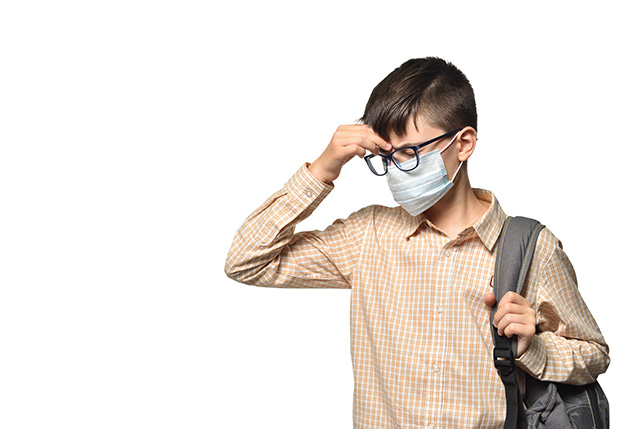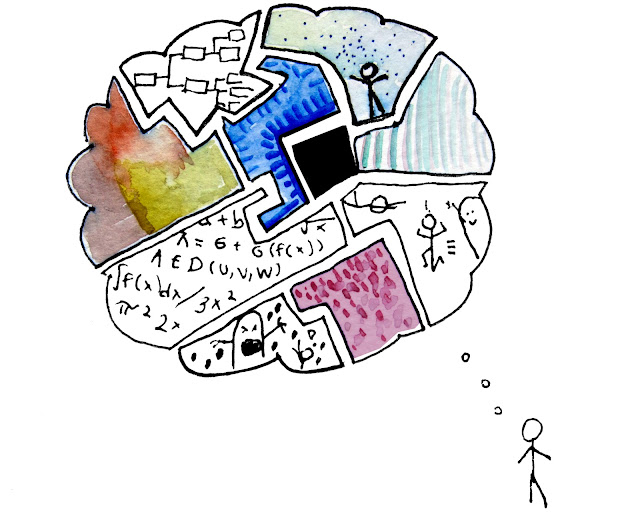
How To Help Your Child Adjust To Going Back to School During the Pandemic
Children who are heading back to the classroom this fall are facing unusual challenges, and one of them is anxiety about being separated from their families after months of togetherness. For some kids it will trigger separation anxiety, in addition to the anxiety they may feel about leaving their safe harbor from the pandemic.

“Kids are just really used to being home with their parents now,” notes Jennifer Louie, PhD, a clinical psychologist at the Child Mind Institute. Even kids who had comfortably adjusted to being in school before the pandemic are finding it stressful to be separated now. And, she adds, “there is the added fear that other people are not as safe as we thought they were.”
When kids go out now, they’re often reminded not to get too close to other people, to keep their masks on, to use sanitizer, to wash their hands, notes Dr. Louie. “There’s just anxiety in the air, and I think kids feel that. I think they are wondering: Are we sure it’s safe to go back? And are other people safe? And is it safe to touch this?”
These are, of course, realistic fears that many adults share. And parents also know that there’s a real risk that in-person schooling may be suspended if it leads to outbreaks of COVID-19.

“I think a lot of parents have been seeing some clinginess in younger kids, or even nine- or ten-year-olds,” reports Rachel Busman, PsyD, director of the Anxiety Disorders Center at the Child Mind Institute. “Kids are saying things like, ‘I don’t want to go back to school,’ or ‘I don’t want to be away from you.’ They’ve been out of the routine of going to school for so long it’s reasonable that they might struggle. And they might take a little bit longer to adapt, especially to these hybrid schedules.”
For some children, the excitement of going back to school after so many months stuck at home will outweigh potential anxiety, Dr. Louie notes. “But I think the kids who already have anxiety are more prone to being more anxious going back.”
So parents have a complicated mission dealing with all this anxiety and uncertainty: reassuring children that it’s safe to be away from them, while also encouraging them to be careful and preparing them to be flexible in case the situation changes. How do you do that? Here are some pointers.
Validate their feelings
It’s worrisome when kids are clingy or fearful about separating from you, but it’s important for parents to stay calm and stay positive. “If your child is telling you that they’re worried or having those negative feelings, you want to validate that and let them have some space to express that. But you don’t want to feed it too much and you want to help them think of something they can do about it,” Dr. Louie says.
“If your child is struggling a little bit, or they say they miss you, that’s okay,” adds Dr. Busman. “I think you want to say, ‘I miss you too, and I’m so proud of you for going to school.’”
Set the tone
“To me, the most important thought about going back to school is that parents lead the charge. If you lead with your own anxiety, you’re only going to fuel anxiety,” says Dr. Busman. “So you want to say what you know, answer questions and act calm even when you are not.” Try not to ask leading questions (“Are you nervous about going to school tomorrow?”), which can indicate to your child that there really is something to worry about.
If children have questions you can’t answer, you can say, “That’s a really good question. I am not sure, but I can find out the answer to that question,” Dr. Busman suggests. “Let’s start a list with questions we have.” Kids appreciate knowing what you’re doing to manage to the situation and also what they can do, so working together to ask and answer questions can help them stay calm.
Help them think positive
For younger kids worried about separation, it helps to know what you’re doing while they’re away, and how you’re staying safe. You can help them imagine where you are, Dr. Louie suggests: “Mommy’s going to be at the grocery store. I’m going to be in such-and-such aisle — what do you think I’m going to pick up?”
Another way to help kids focus on positive things is to try to get them to talk about the good things about school. What are they looking forward to? What did they enjoy the previous day?
Dr. Louie adds that transitional objects can be really helpful for younger kids to feel connected to home. A transitional object can be anything that helps your child feel connected to you when you’re apart — a stone, a button, a handkerchief. “Hopefully something small that they can keep in their pocket, that’s not too distracting, but something that they can take with them, a piece of home, a piece of their caregiver that can help them feel better.”

Practice separating
For children who are anxious about being apart, our experts suggest practicing separation, starting in small ways and building tolerance for more and more independence.
“Things like playing in your room by yourself, while Mom is in the kitchen cooking dinner. Or staying with another caregiver while Mom or Dad goes out,” explains Dr. Busman. “Those little things build the currency towards the big separation.”
Have a routine
Making sure that your child has a predictable routine leading up to school can help kids, especially younger ones, feel more secure.
“I think it just takes the uncertainty out of it — we always do this and we always do that,” says Dr. Louie. “For example, at drop-off Daddy always does a hug and a kiss before he says goodbye, and then we wave from the door.”
And if your routine and practicing separation still don’t prevent a child clinging to you at drop-off, it helps to have coordinated a plan with the teacher, so you know that when the teacher steps up to engage your child, and your child is even tentatively engaged, it’s the cue for you to go. “As soon as the teacher gives you a signal that they have got it under control, even a tiny bit, you want to say, ‘Great job going with your teacher! See you later. Mommy is going to be back at noon,’” says Dr. Busman. Many kids feel better as soon as they get into the swing of the school day, so drawing out your goodbyes usually doesn’t help.
It can also help to try out small variations in the separation process. Maybe your child does better with one caregiver than another, or maybe carpooling with someone in your “pod” makes the process easier. “It’s okay to figure out what works in your family and use whatever resources you need to,” says Dr. Busman.
Emphasize safety measures
We can’t promise our kids that we won’t get sick, but we can express confidence that the schools have done months of planning to minimize risk and keep everyone safe — that’s why all the new rules are in place. “I think it helps to reassure kids that everybody’s doing their best to keep things healthy,” suggests Dr. Louie, “and they wouldn’t open the school unless they were going to be really careful.”

Older children can understand the concept of acceptable risk. “We can never be 100 percent sure that we are not going to get sick,” Dr. Louie notes, “sometimes we have to take small risks to do important things.”
Encourage flexibility
Since there is a possibility that children who start school in person may be expected to switch back to remote learning, at least for some periods of time, it’s helpful for kids to know that you’re prepared for changes that may occur.
“We don’t want to set kids up to be scared if it does go back,” notes Dr. Louie. “We have to live it day by day, so we can say, ‘Today the grown-ups have decided it’s safe for you to go. If that changes and it seems more risky, they’ll decide we should stay home.’”
Let your child know that the whole family is going to have to be flexible, adds Dr. Busman. “You can say, ‘My guess is that things might change between now and the end of the year. And you know what? I promise that I’m going to give you information as I have it, but I would love for you to also make a promise. If you have a question you should always come to me first so I can make sure you have all the information.’”

When should you get help?
Kids who have trouble separating often just need time, and support from parents and teachers, to adjust. But if your child is having severe meltdowns at drop-off time for more than two or three weeks, and is unable to recover or to even stay at school, for more than three or four weeks, then seeking help can make a big difference.
Treatment for separation anxiety is usually involves a therapist working with the child and the parents to plan step-by-step ways for them to practice separating a little at a time.
Therapists often work with teachers, too, to see what they can be doing to help and make sure they are on the same page with parents. Therapy also involves helping anxious kids talk to themselves and reassure themselves that they’re okay in difficult moments.
In some cases kids may resist going back to school because the quarantine was actually a lot easier for them than going to school — kids with a lot of social anxiety, or who were bullied, or kids with learning disorders who had an easier time at home where they could do things at their own pace. Therapists can explore with them what aspects of school they don’t like or don’t want to do, even if you’re not sure at first. “Sometimes you just won’t know,” adds Dr. Louie, “but you can still do the behavioral techniques without knowing exactly why they don’t want to go.”
